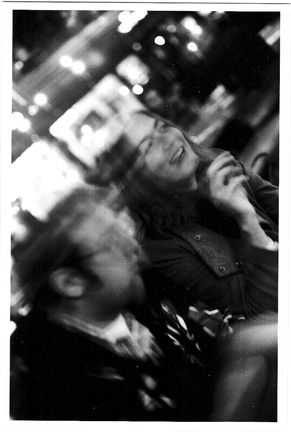Time and aesthetics.

Beauty may be in the eye of the beholder, but the eye of the beholder has a biological preference based on mathematical proportions.
Within the context of the man-made environment and the natural world, there is a documented human cognitive preference for golden section proportions throughout recorded history. Some of the earliest evidence of the use of the golden section rectangle, with a proportion of 1:1.618, is documented in the architecture of Stonehenge built in the 20th to 16th centuries, B.C. Further documented evidence is found in the writing, art, and architecture of the ancient Greeks in the fifth century, B.C. Later, Renaissance artists and architects also studied, documented, and employed golden section proportions in remarkable works of sculpture, painting, and architecture. In addition to man-made works, golden section proportions can also be found in the natural world through human proportions and the growth patterns of many living plants, animals, and insects. – Kimberly Elam, Geometry of Design
In interaction design, there are not only physical attributes of beauty to be defined, but temporal ones as well. So what is the time-based equivalent of the golden rectangle? Are there mathematical formulas and proportions that determine what we define as beautiful across time?
Apparently, yes. Anthony Chemero, a cognitive scientist at Franklin & Marshall College, recently conducted a study looking at German philosopher Martin Heidegger’s theory that humans become one with the tools they use:
Chemero’s experiment, published March 9 in Public Library of Science, was designed to test one of Heidegger’s fundamental concepts: that people don’t notice familiar, functional tools, but instead “see through” them to a task at hand, for precisely the same reasons that one doesn’t think of one’s fingers while tying shoelaces. The tools are us.
This idea, called “ready-to-hand,” has influenced artificial intelligence and cognitive science research, but without being directly tested.
In the new study, Chemero and graduate students Dobromir Dotov and Lin Nie tracked the hand movements of people using a mouse to guide a cursor during a series of motor tests. Part way through the tests, the cursor lagged behind the mouse. After a few seconds, it worked again. When Chemero’s team analyzed how people moved the mouse, they found profound differences between patterns produced during mouse function and malfunction.
When the mouse worked, hand motions followed a mathematical form known as “one over frequency,” or pink noise. It’s a pattern that pops up repeatedly in the natural world, from universal electromagnetic wave fluctuations to tidal flows to DNA sequences. Scientists don’t fully understand pink noise, but there’s evidence that our cognitive processes are naturally attuned to it.
But when the researchers’ mouse malfunctioned, the pink noise vanished. Computer malfunction made test subjects aware of it — what Heidegger called “unreadiness-at-hand” — and the computer was no longer part of their cognition. Only when the mouse started working again did cognition return to normal. (One assumes, though the researchers didn’t test the proposition, that cognition would also have returned to normal had test subjects stood up and stopped using the computer.)
The results demonstrate how people fuse with their tools, said Chemero. “The thing that does the thinking is bigger than your biological body,” he said. “You’re so tightly coupled to the tools you use that they’re literally part of you as a thinking, behaving thing.” – Brandon Keim, Your Computer Really is a Part of You
This oneness with the user is a necessary component of the aesthetics of interaction design. Beautiful interactions are “ready to hand” interactions. Interaction design is beautiful when the interaction is effortless and automatic.
